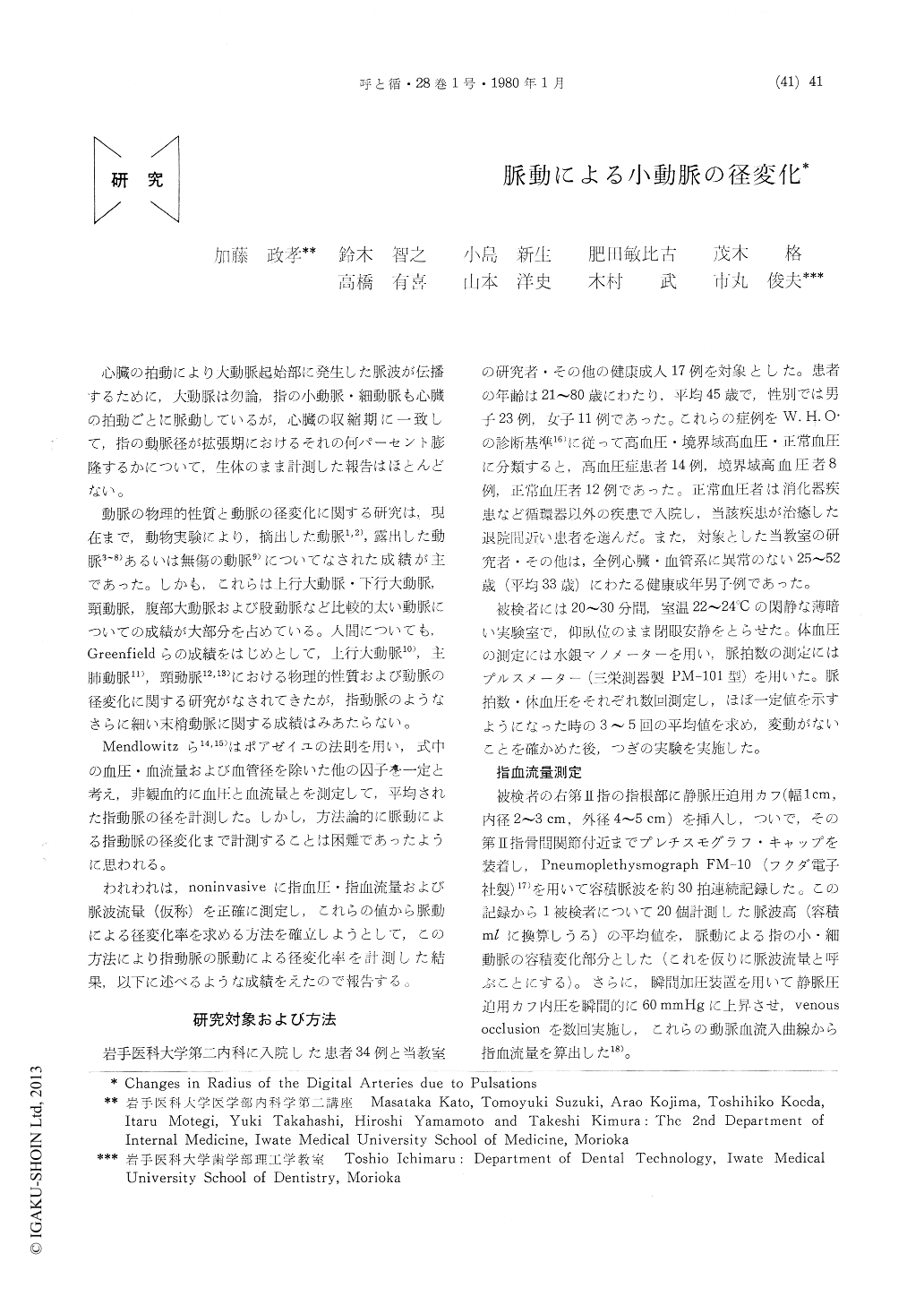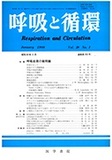Japanese
English
- 有料閲覧
- Abstract 文献概要
- 1ページ目 Look Inside
心臓の拍動により大動脈起始部に発生した脈波が伝播するために,大動脈は勿論,指の小動脈・細動脈も心臓の拍動ごとに脈動しているが,心臓の収縮期に一致して,指の動脈径が拡張期におけるそれの何パーセント膨隆するかについて,生体のまま計測した報告はほとんどない。
動脈の物理的性質と動脈の径変化に関する研究は,現在まで,動物実験により,摘出した動脈1,2),露出した動脈3〜8)あるいは無傷の動脈9)についてなされた成績が主であった。しかも,これらは上行大動脈・下行大動脈,頸動脈,腹部大動脈および股動脈など比較的太い動脈についての成績が大部分を占めている。人間についても,Greenfieldらの成績をはじめとして,上行大動脈10),主肺動脈11),頸動脈12,13)における物理的性質および動脈の径変化に関する研究がなされてきたが,指動脈のようなさらに細い末梢動脈に関する成績はみあたらない。
Digital blood flow (F) and differential (pulsatile) flow (ΔV) were measured by means of the venous occlusive method in the right forefinger using Pneumoplethysmograph FM-10, changes in radius of the digital arteries were calculated from following equation: ΔV/V=2・Δr/r, in which r is a radius of the digital artery in diastolic phase and Δr is a maximum increment of the radius in systolic phase of the heart cycle.
Changes in radius of the digital arteries due to pulsations were the greatest in hypertensive patients (7.51±0.05)%, and in descending order was less in subjects with borderline hypertension (7.32±0.67)%, and normal subjects (6.94±0.93) %. No significant difference was found statistical-ly among them.

Copyright © 1980, Igaku-Shoin Ltd. All rights reserved.


